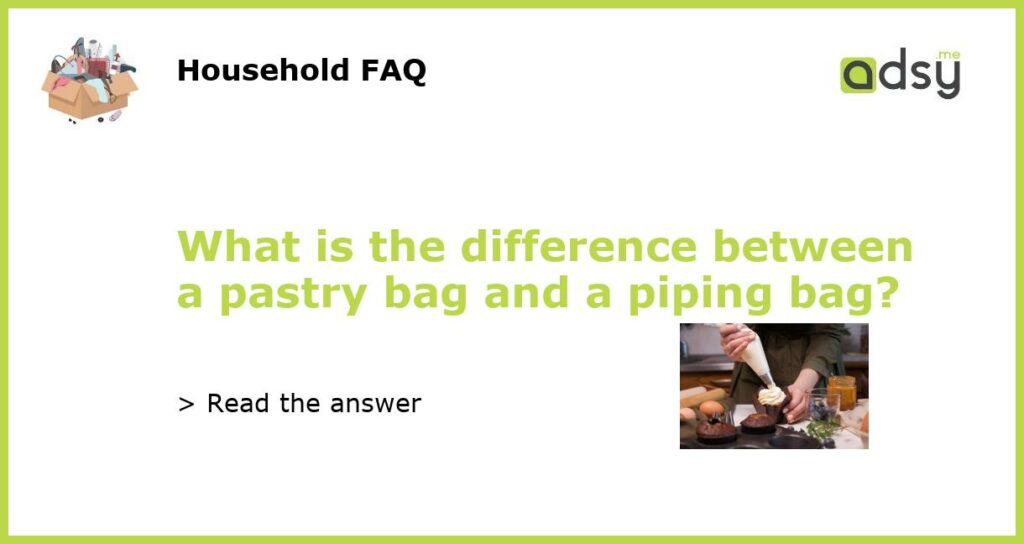What is a pastry bag?
A pastry bag, also known as a piping bag, is a culinary tool used for piping various ingredients, such as cake and cookie dough, cream fillings, and frosting. It is made of cloth, plastic, or silicone and is cone-shaped, with one end open and the other end closed. The open end is where the ingredients are inserted, and the closed end is where the tips and nozzles are attached for different decorative patterns.
What is a piping bag?
A piping bag, also commonly referred to as a pastry bag, is a versatile tool used in baking and decorating. It is a cone-shaped bag made of cloth, plastic, or silicone, with one end open and the other end closed. The open end is where the ingredients are filled, and the closed end is where different tips or nozzles are attached for various designs. Piping bags are primarily used for precise and controlled dispensing of dough, creams, and icings onto cakes, pastries, and other desserts.
The main difference
While both terms are often used interchangeably, there is no significant technical difference between a pastry bag and a piping bag. The terms are regional or personal preferences, and both refer to the same tool used for piping various ingredients in the culinary world. The choice of term may vary depending on the country or the professional chef’s training background.
Common uses
Piping bags are commonly used in bakery and pastry shops for tasks such as applying decorative borders or writing on cakes, filling cream puffs and éclairs, creating rosettes or piped flowers, and making intricate designs on cookies or cupcakes. Pastry chefs and home bakers use piping bags to express their creativity and add beautiful finishing touches to their creations. The bags come in different sizes, allowing for greater control and precision while piping different consistencies of dough or frosting.
Tips and care
When using a pastry or piping bag, it is essential to choose the right tip or nozzle for the desired design. Different tips create various patterns, such as stars, shells, and round shapes. Additionally, it is crucial to handle the bag properly, applying even and consistent pressure to achieve uniform results. After use, the bag should be cleaned thoroughly, especially if it has been used with buttercream or chocolate that can harden and clog the nozzle. Most piping bags are reusable and can be washed with warm, soapy water or placed in the dishwasher for cleaning.






